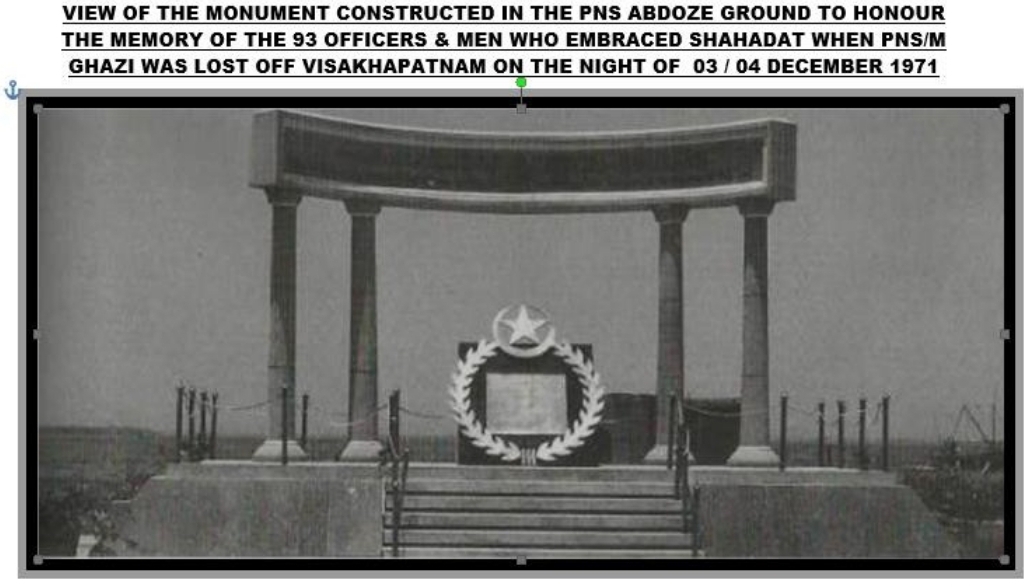Relentless Contribution of Operation
Relentless Contribution of Operation Murreein the defence of the motherland
(A compilation of archival material by the PN History & Archive Centre)
Induction of Submarine in PN Flotilla 1964
Operation MURREE code name for the PN endeavors in the early sixties to include submarines in its flotilla had culminated with the successful induction in the PN Flotilla in 1964 of submarine PNS GHAZI, a world war 2 vintage ‘TENCH-CLASS’ Submarine.
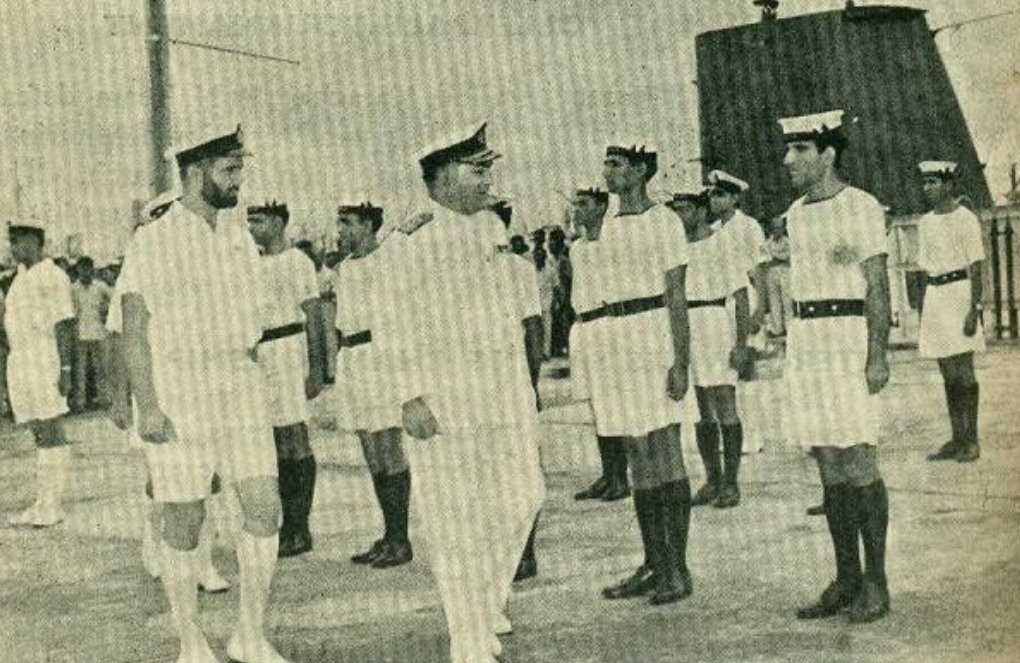
This was a masterstroke that enabled the PN to convert the undersea world in the Indian Ocean into a battleground.
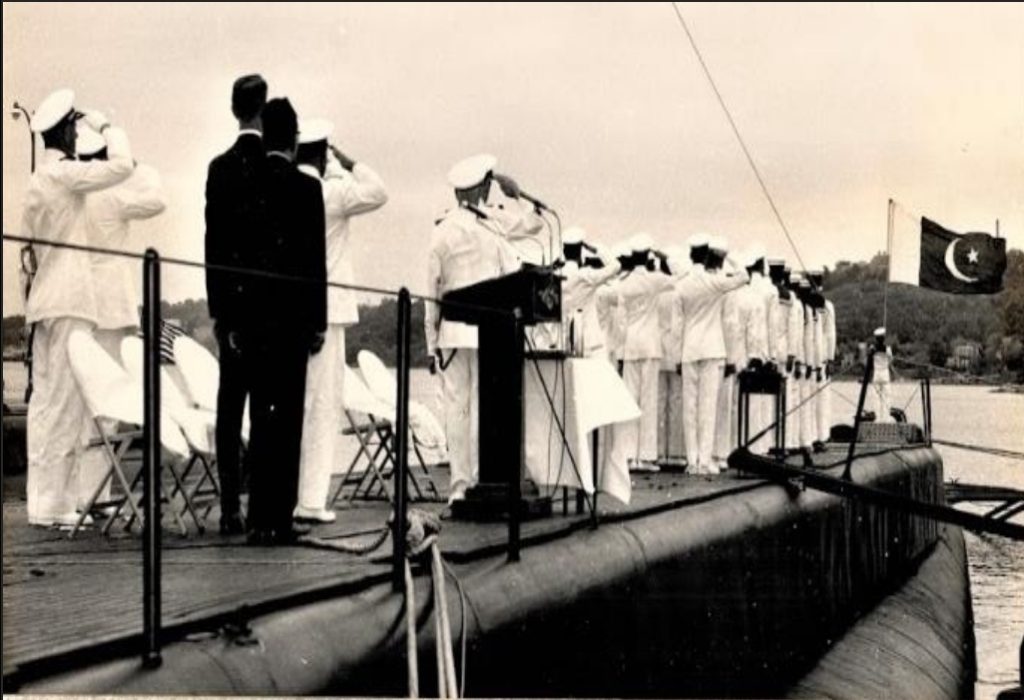
Role of Submarine in 1965 Indo – Pak War
On 5 August 1965, the war broke out between India and Pakistan PNS Ghazi under the command of then- Commander Karamat Rahman Niazi, she aided the PN Flotilla by providing information on the enemy during bombardment operations of Dwarka on the night of 7 September and thereafter maintained a presence outside Bombay to deter Indian Surface units from leaving harbor till 23 September when she returned to Karachi. Earlier, on the forenoon of 22 September, she detected, tracked, and around sunset engaged two frigates firing four torpedoes. Her mere presence outside the Indian principal port is considered to have deterred the major units of the Indian Navy from leaving the harbor. As it did prove subsequently the measure of deploying the lone PN submarine off the Indian coast affected the plans of the Indian Navy and created a scare to put their surface units particularly the heavy units out to sea. Effectively leading to the bottling up of the Indian Navy in their ports. Come to the Indo Pak war of 1965 – GHAZI was offensively deployed in enemy waters; she proved her mettle by bottling up the bulk of the Indian Navy in port of Bombay, thus securing the seaward flank for the PN flotilla while it bombarded the Indian coastal town of Dwarka. This audacious performance won the submarine 10 military, (two decorations of Sitara-e-Jurat, one Tamgha-i-Jurat, President’s citations, and six Imtiazi Sanads).
Effect of Submarines on Adversary
So effective indeed was GHAZI’s blockade that no Indian warship dared run the gauntlet. This was a major embarrassment for the many times stronger and aircraft carrier equipped Indian Navy (IN). The dread of PN Submarine Force, however, seems to have persisted in the Indian mind in the six years between the two wars. This became more apparent during pre-hostilities in 1971 when the Indian Navy moved the aircraft carrier VIKRANT, all the way to their eastern seaboard. Encouraged by the operational success of its sole submarine, the PN began the development and acquisition of three DAPHNÉ-CLASS submarines from France. These submarines were renamed by the PN as the HANGOR CLASS included the HANGOR nickname ‘The Shark’ as the lead ship of her class, the two other submarines being SHUSHUK and MANGRO, all commissioned in 1970.
The Indian Navy’s response to the PN’s strengthening of its submarine arm was in strengthening IN’s ASW capability by bolstering the elements of its air arm which were dedicated for ASW and adding a squadron of three Type 14 frigates (KHUKRI, KIRPAN & KUTHAR) designed as anti-submarine warfare vessels whose weapon and sensor fit on each vessel comprised of the then state of the art sonar trio of (Type 174 search sonar, Type 162 target classification sonar and Type 170 targeting sonar) coupled with a potent weapon suite of Limbo Mark 10 anti-submarine mortars and deck-mounted tubes for launching anti-submarine homing torpedoes making the vessels the most effective frigates in anti-submarine warfare.
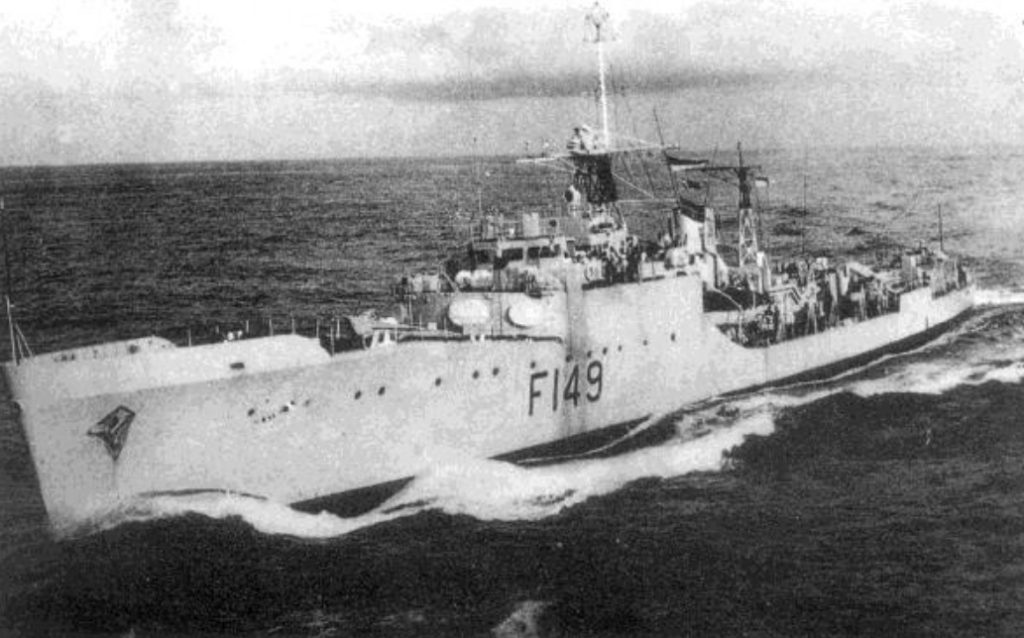
PNS/M HANGOR IN THE 1971 Indo Pak War
Role of Submarines in 1971 Indo-Pak War
PNS/M GHAZI
- On 14 November 1971 (25TH Ramadhan 1391) at around 1950 Hrs, shortly after the crew consumed Iftaar and had been bid farewell at S/M wharf 13, by the C-in-C Pakistan Navy, PNS/M GHAZI (S130) quietly sailed from Karachi on a journey of 3,000 miles (4,800 km) around the Indian peninsula from the Arabian Sea to the Bay of Bengal under the command of Cdr Zafar Muhammad with 11 officers and 82 sailors. GHAZI’s deployment to the Bay of Bengal was one of the several measures to rectify a strategic posture that was getting increasingly out of step with military realities with time. Her mission was two-fold: the primary goal was to locate and sink the INS Vikrant and the secondary was to mine India’s eastern seaboard, which was to be fulfilled irrespective of the accomplishment of the primary goal. For her mission she carried 13 MK-14 Torpedoes and 20 MCC-23C bottom influence, frequency actuated mines, acquired by the PN from France in 1967. Facts about GHAZI’s tragic fate are few and speculations too many. All that can be said with certainty is that she arrived off Madras as scheduled and at her destination – the approaches to Visakhapatnam harbor on 30 November 1971 and started recce.
- Thereafter, lying in wait for the Indian Carrier VIKRANT she began laying mines in the approaches to the harbor. On the night of 3RD/4TH December 1971, shortly after midnight, she is assumed to have fallen victim to a calamitous ‘incident of accidental mine explosion’ in which all officers and men perished and attained shahadat. Any formal announcement of the discovery by the divers was however deferred, till such time that recognizable objects from the ill-fated submarine were recovered, collected, assembled tallied, and flown by air to the NHQ along with an accompanying story to link the loss of the submarine to an action / enhanced vigil of the Indian Navy. These were eventually paraded and presented before the media on 9th December 1971 morning; 5 days after her loss. The timing chosen to announce GHAZI’s demise was coincided with the official reporting by the Indian Navy, of the sinking of its anti-submarine frigate KHUKRI as a result of an attack by the PNS Submarine HANGOR. Several IN ships have since linked their deeds in a claim to the demise of the gallant though ill-fated submarine GHAZI albeit the cause of its loss can with most certainty be attributed to none other than a mishap on board the submarine itself.
PNS/M HANGOR
- In 1971, HANGOR was deployed in the North Arabian Sea to undertake two separate tasks – namely: in August 1971 to gather intelligence on the Indian Navy movements and in December 1971 undertake the hunter-killer operation against Indian Navy units during the war. When hostilities became imminent she sailed a little later after midnight on 22 November 1971 for her assigned area which was the southernmost amongst the three sectors along the Kathiawar coast assigned for war patrol to the three HANGOR CLASS submarines.
- Soon after deployment, a series of operational defects plagued the submarine, warranting a return to harbor. However, with superior leadership and patriotism and professional competence of its dedicated crew, lots of ingenuity, patience & labor the defects were repaired at sea and the patrol continued. On 01 December, while submerged and armed with the data gathered during its August 1971 deployment, HANGOR intercepted some radio transmissions from the warships belonging to the Western Naval Command of the Indian Navy that were headed in a northerly direction. Alas, she could not engage any of those vessels as she had not received the code from NHQ conveying that hostilities had broken out.
- Seized by the urgency of the situation-Commander Ahmad Tasnim broke the radio silence and communicated with the Navy NHQ to warn of the northerly movement of IN Ships. This communication of HANGOR was immediately detected and on 3 December 1971, the Indian Navy dispatched two ASW Type 14 frigates, INS KHUKRI and INS KIRPAN, of the 14th Frigate Squadron under the command of Capt. Mahendra Nath Mulla, to the area from where transmissions had originated.
- PNS/M HANGOR continued her patrol to locate the evasive enemy; she extended her patrol northwards to investigate some intercepted radio transmissions. Consequently, when she was off the Kathiawar coast in the early hours of 9 December; two contacts were picked up on her passive sonar on a north-easterly bearing. They were identified as warships by their sonar transmissions and were at a radar range of 6 to 8 miles. The two contacts were appreciated to be two anti-submarine frigates engaged in SAU (Search and Attack Unit) operations doing a rectangular anti-submarine search and thus a pursuit of the enemy began.
- On 9 December 1971, at 19:00 Hrs, HANGOR detected the possible signature of the two Indian frigates dispatched in response to the intercepted communications. HANGOR constantly tracked them and at around midnight, Cdr. Tasnim ordered HANGOR to dive deep to carry out a blind (sonar only) approach. The torpedo team concentrated on tracking the two targets as they gradually came within firing range, at 19:50, the submarine fired a down-the-throat shot with a homing torpedo at KIRPAN from a depth of 40 metres (131 ft). The torpedo was tracked, but no explosion was heard; KIRPAN sensed the torpedo, realized that the ship was under attack turned away at maximum speed from the scene. HANGOR had struck first.
- As KIRPAN fled the battle area, KHUKRI, to its south, knowing the direction from which the torpedo had come, increased speed and came straight for an attack on HANGOR. As KHUKRI came in for an attack, HANGOR’S attack team shifted targeting to KHUKRI, quickly firing a second torpedo. A second torpedo was now fired at the approaching KHUKRI and was followed by a heavy and loud explosion as the torpedo struck the magazine of KHUKRI. INS KIRPAN moved into the scene, hoping to engage HANGOR with a hasty dropping of the depth charge, but a third torpedo locked onto KIRPAN’S tail, followed by the sound of an explosion. KIRPAN was not sunk but there appeared to be some damage as she stopped pursuing HANGOR and again left the battle area turning west towards deep waters.
The spectacular war action took place 30 miles southeast of ‘Diu Head’. The event is distinguished in naval history as being the first-ever kill by a conventional submarine after World War-II. KHUKRI sank in a matter of two minutes the casualty roster listed 18 officers and 176 sailors aboard KHUKRI and it remains as the Indian Navy’s most costly wartime casualty in terms of lives lost. After this incident, the entire anti-submarine assets (Seakings, Alizes and Super Connies) of the Western Indian Fleet were deployed into a massive operation named Operation FALCON which over the next 96 hours mercilessly hunted in vain to locate and destroy HANGOR. Some 156 underwater charges (each carrying 200 KG of explosive) were dropped along all possible escape routes of the HANGOR and there were some close calls. The submarine remained submerged for a week and was able to skillfully evade its pursuers and returned to Karachi unharmed, proudly entering harbor on 18 December 1971. A tumultuous welcome awaited HANGOR at the submarine wharves with the Commander in Chief of the PN at the head of the reception line.
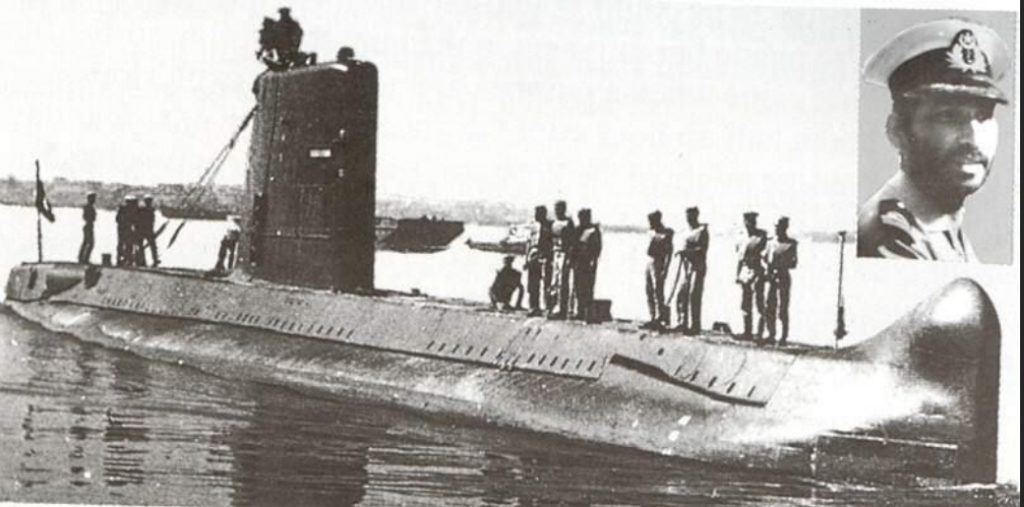
The significance of HANGOR action was manifold. It not only demonstrated Pakistan Navy’s tactical superiority in subsurface warfare but the strategic impact was even more significant as the Indian Navy cancelled ‘Operation Triumph’, the third missile attack, which was to be launched on 10 December and thereafter no further missile or other attacks could be carried out by the Indian Navy on Pakistan Navy ships and Karachi harbor.
It is for the record that in the 1971 war with PN surface fleet almost neutralized by the Indian missile threat; the burden of the Pakistan Navy’s entire offensive effort hinged largely on the small and nascent submarine force. Viewed in a larger perspective, the deployment of submarines by SUBRON 5 in the 1971 war achieved not only operational success at tactical level through the success of attack delivered by HANGOR – but achieved a milestone too – by choosing to deploy and task PNS/M GHAZI on a dual role of minelayer cum hunter-killer operation on India’s east coast, a smart strategic overture which effectively thwarted and marginalized enemy’s aggression in 1971 war.
Such flexibility in thought, bold and courageous action by the PN Submarine force in its formative years was not expected and had far-reaching consequences to be catered for by the Indian Navy. Indeed ‘Operation Murree’ had made a relentless contribution in the defence of our mother land and achieved all its objectives.
Devout and remarkable coincidence it indeed was – that the time on 14 November 1971 when GHAZI sailed from Karachi for her heroic mission on the ‘eastern seaboard’ of India was 19:50 Hrs; 19:50 Hrs also was the time on 9 December 1971 when HANGOR commenced her torpedo attack and scored a hit that sank the INS KHUKRI on the ‘western seaboard’ of our adversary India. The PN Submarine force had indeed extended the entire seascape of underwater operations beyond the expectation of the enemy and made the country proud.
